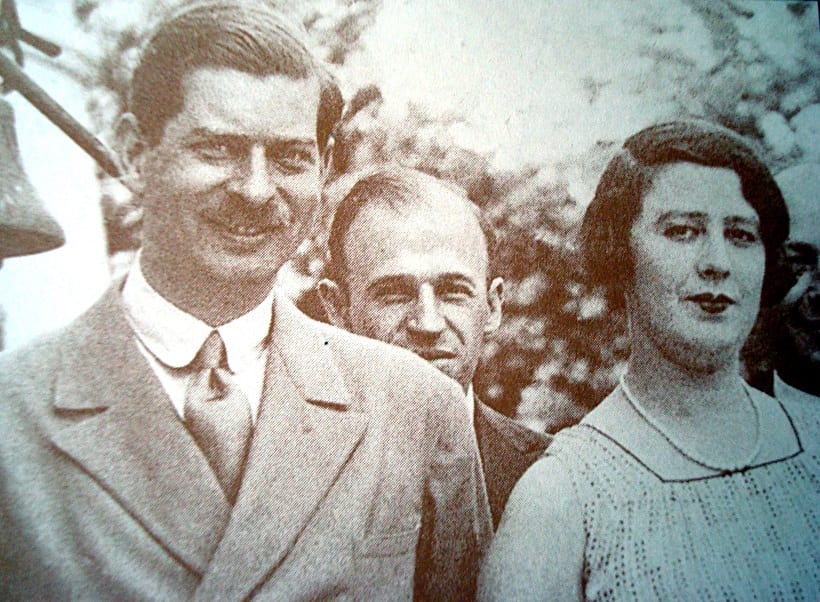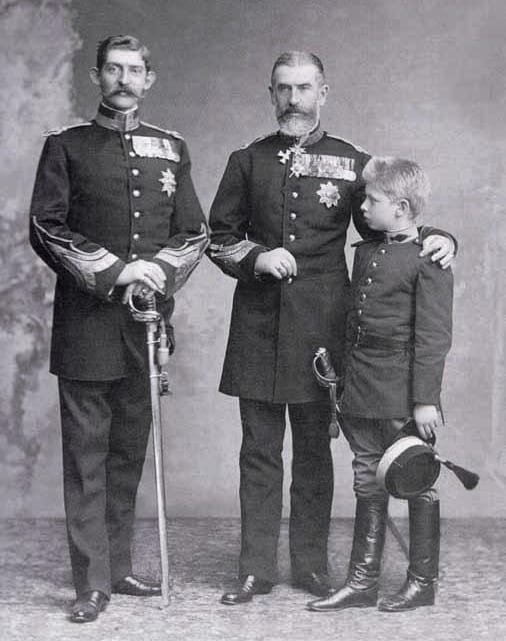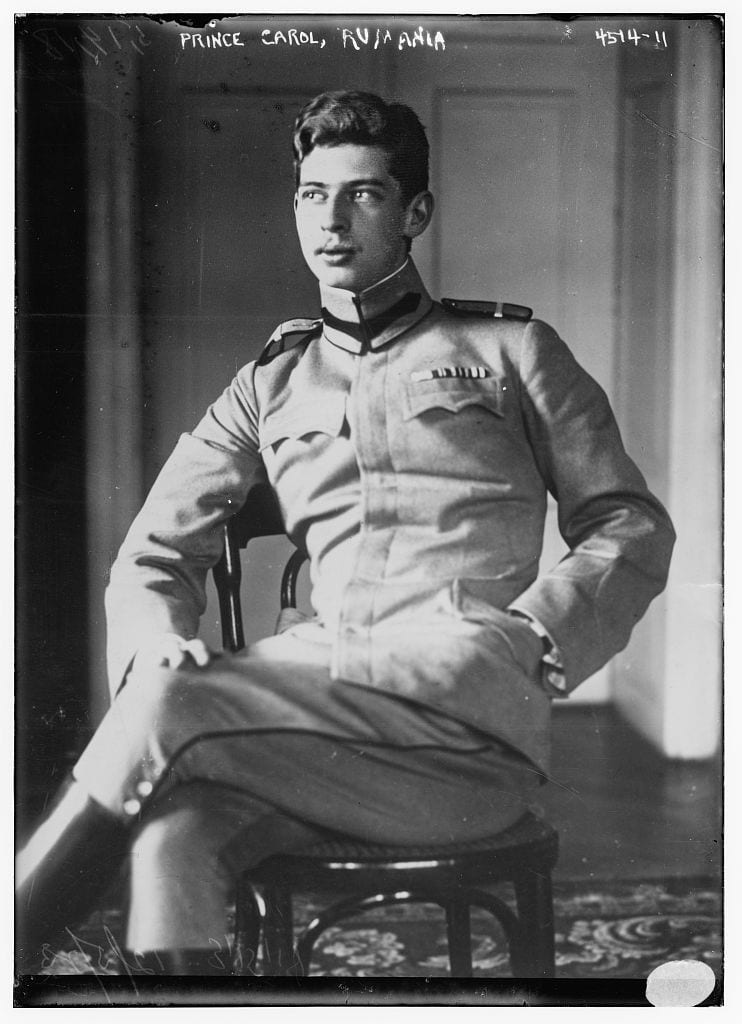The guide to “how an entitled man should behave” recommends – particularly in the #MeToo Era – that he refrain from publicly remarking that Jane Doe’s legs rouse his libido. That is to say, he can do it, but he has to also be prepared to eulogize his career. In the past, men of status took pride in their attraction to women’s feminine lower limbs. Napoleon Bonaparte declared when he first saw Josephine walking in the palace antechamber that her legs caused him to fall head-over-heels in love. Titus, the military commander who destroyed the Second Temple – they say – only fell in love with the Jewish Princess Beronica because her beautiful legs inflamed his passion. Our story this time also begins with a princess and a pair of feminine legs that caused a king to lose his crown.

Magda Lupescu was born in 1896 to Jewish parents from Bucharest. Her father, Wolf Schwartz, was a successful apothecary and her mother, Elise, was a dancer. The daughter of an established family, she was sent as a teen to the prestigious Diaconesele boarding school, where she excelled in her studies. She was not just a pretty face, but a sharp and exceptional student. Her proud parents and teachers envisioned a rosy future, but even in their wildest dreams did not predict that Magda would one day become a royal.
Albert Einstein once said, “Coincidence is God’s way of remaining anonymous.” Indeed, coincidence was how divine intervention brought the stars of our story together. On a frigid February day in 1925, Carol II, the heir to the Romanian throne, entered the royal photographer’s dark room. He was rifling through dozens of pictures when he came across a photograph of a young girl with shining hair and magnetic green eyes. He immediately asked to meet her and – when he saw Magda for the first time – he could not take his eyes off her legs.
“She has the most beautiful gait in Europe,” he told his associates – and from that moment, the fates of Carol II and the young Jewess were entwined.

But before we continue, a few words about Carol II’s royal heritage. In 1866, Carol von Hohenzollern-Sigmaringen – who established the Romanian monarchy – was smuggled by ship down the Danube and crowned King of Romania. A cold and rigid man, Carol I’s entire life focused on his sole passion, artillery. When he heard the canons thunder during his first war as a senior commander of the Romanian army he said, “That is the most beautiful music I have ever heard in my life.”
When Carol I died in 1910, his nephew Ferdinand inherited the throne. Unlike his uncle who derived satisfaction from the smell of ashes, Ferdinand was interested in hybridization and considered an expert agronomist and botanist.
In 1893, a young heir to the throne was born to Ferdinand and his wife Maria, and named Carol II, after his illustrious uncle. The young Carol II did not share his uncle’s and father’s interests in artillery or botany – he was interested in women. From a young age, Carol the younger developed a strong affection for the fair sex and engaged in affairs that irked the family. When Romania was at war with Germany, in World War I, Carol went AWOL to spend very sweet hours in the company of a fair young lady. His mother, Maria, could not bear the shame. She sent him a letter in which she dismissively rebuked him for being, “nothing more than an overgrown boy and wasting his time. A year later, he declared – in a royal luncheon before his parents and relatives – his intention to marry a common local noblewoman, in breach of the Romanian royal family’s laws. Carol and his lover fled to Paris, where they lived on a royal stipend. He later came to his senses and toed the line, marrying a Greek princess named Helena. They had a son, Michael, and it seemed that Carol had finally settled down.

But then Elena Magda Lupescu arrived on the scene, reawakening the butterflies in the Prince’s stomach. When King Ferdinand, Carol’s father, learned of his son’s love affair with the beautiful Jew, he ordered that Magda be deported from Romania at once. But even the King’s wrath could not extinguish the flame of passion. Carol took the first opportunity – an invitation to the funeral of Queen Mother Alexandra of England – to forego offering his condolences to the royal family in London. Carol was spotted instead in the company of his beloved – in Milan. The local press jumped on the windfall and photographed the loving couple from every possible angle. The pictures spread throughout Europe the following day, and the city of Bucharest was shamed.
The fact that Carol engaged publicly in an extramarital affair should have been unforgiveable. But the Romanian monarchy decided to give him a last-chance “prince’s discount.” To that end, his close friend, a pilot named Mogor, was dispatched to his side. Mogor received an order: Do not return to Romania without the heir to the throne. Carol’s wife Helena also wrote her husband a letter begging him to come home. She tried to rouse his sense of guilt, noting that their son, Michael, was constantly asking where Papa was. But nothing helped. Carol’s and Magda’s connection was not a fleeting infatuation – it was real, deep love. Carol replied to his friend Mogor that he would relinquish the Romanian crown. And in his words, “Only return to Romania in a coffin.”

The last plot twist took place in 1927, when King Ferdinand died. Because Carol II had relinquished the crown, his son Michael was crowned King. There was one sticky detail: Michael was only six-years old. The King of Romania was no mere figurehead, but an active leader in the nation’s political life. That sparked a protest movement calling for the original heir’s reinstatement. Carol was carried on the wings of the nation’s adoration back to Romania on June 8, 1930 and crowned King in a lavish coronation.
What happened to Magda? In noteworthy political wisdom, Magda convinced her lover not to make her the official queen. She quietly and affectionately returned to Romania, where she established a small court and remained at Carol’s side. Carol married Magda in 1953, making the common girl from Bucharest the first Jewish Princess since the destruction of the Second Temple. She died, 25 years later, in 1977. Her tombstone reads, “Here lies the daughter of Apothecary Ze’ev [Wolf] Schwartz.”